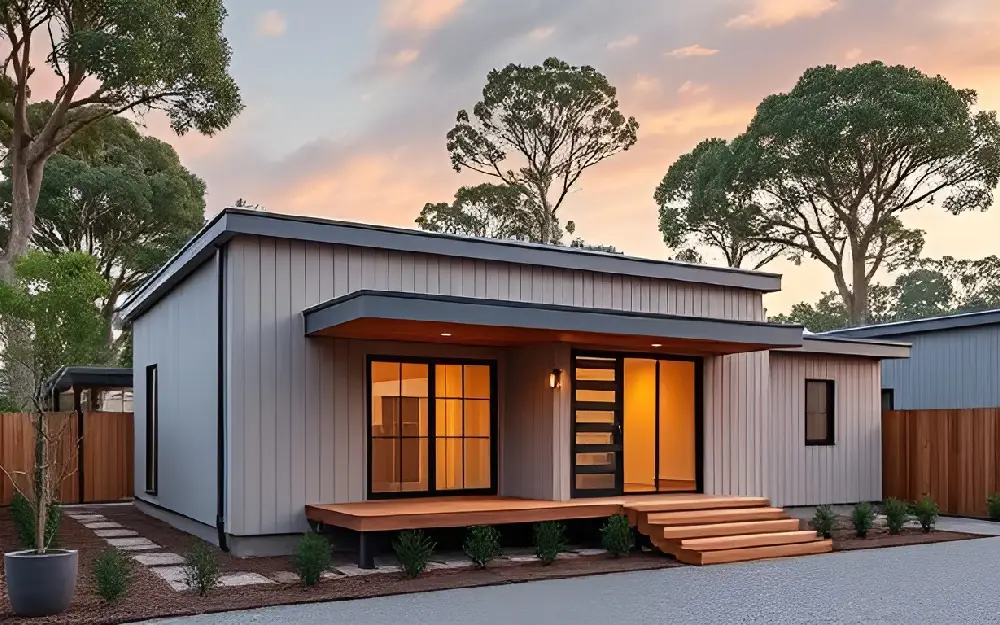
Modular Homes: A Sustainable Solution for Affordable Housing
In a world where housing costs continue to rise, finding affordable and sustainable solutions has become a pressing challenge for many individuals and families. One innovative and increasingly popular option is modular homes, which offer an affordable, efficient, and flexible solution to the housing crisis. But what exactly are modular homes, and how do they contribute to solving the affordable housing dilemma?
What Are Modular Homes?
Modular homes are pre-fabricated structures that are built in sections, or modules, in a factory setting before being transported and assembled on-site. These homes are constructed to meet the same building codes and standards as traditional homes, but the difference lies in the process. Rather than being built entirely on-site, modular homes are assembled from pre-made parts, making construction faster and often more cost-effective.
The Benefits of Modular Homes for Affordable Housing
- Cost-Effective Construction
One of the main draws of modular homes is their affordability. The construction process for modular homes is streamlined, with less labor required on-site, and materials are often purchased in bulk. The factory setting allows for better control over production costs, reducing waste and minimizing delays. As a result, modular homes are typically less expensive than traditional stick-built homes, which can make homeownership more accessible for lower-income families. - Faster Build Times
Time is money, and modular homes offer a significant advantage in terms of construction speed. While traditional homes can take several months or even longer to complete, modular homes can be built in a matter of weeks. Since the modules are constructed off-site while the foundation is being prepared, the overall timeline is drastically shortened, making it easier to meet demand in areas where housing shortages exist. - Energy Efficiency
Many modular homes are designed with energy efficiency in mind, incorporating advanced insulation, high-quality windows, and modern HVAC systems. These features not only help reduce energy consumption but also lower utility bills for homeowners. In a world where energy costs are continually rising, energy-efficient homes provide long-term financial relief, making them an even more attractive option for those on tight budgets. - Sustainability
Modular homes are often built with sustainable practices and materials. The off-site construction process allows for better waste management, and many manufacturers prioritize using eco-friendly materials that have less environmental impact. Additionally, the ability to build homes with energy-efficient technologies can contribute to reducing the overall carbon footprint of the housing sector. - Design Flexibility
One misconception about modular homes is that they are limited in design options. However, modern modular homes offer a wide range of customizable floor plans and design features, allowing homeowners to create a living space that suits their needs and preferences. From modern, open-concept layouts to more traditional designs, modular homes can be tailored to meet different tastes and requirements. - Durability and Quality
Since modular homes are constructed in a controlled factory environment, they are often built to higher quality standards. Factory settings are not subject to weather delays, which can impact the construction process in traditional homes. Moreover, modular homes undergo rigorous quality control checks to ensure they meet safety and building code standards, resulting in durable, high-quality homes.
Modular Homes and Affordable Housing: A Perfect Match
In many regions, the demand for affordable housing far exceeds supply. Traditional methods of construction can be slow and expensive, making it difficult for developers and local governments to build enough affordable housing units to meet the needs of low-income families. Modular homes, with their cost-effective construction process and ability to be built quickly, provide a much-needed solution.
For cities and towns grappling with housing shortages, modular homes can offer an efficient way to increase the availability of affordable housing. They can be constructed in various settings—rural, suburban, or urban—and are adaptable to different climates and terrains. As communities seek to address housing inequality, modular homes provide an innovative way to build the homes people need without overextending budgets or timelines.
Overcoming Challenges
While modular homes present a promising solution, they are not without challenges. Zoning regulations and local building codes can sometimes make it difficult for modular homes to be installed in certain areas, as they are often subject to the same restrictions as traditional homes. However, as awareness and acceptance of modular construction grow, many cities are beginning to modify their policies to allow for more flexible housing options.
Moreover, some individuals may still hold misconceptions about the quality and durability of modular homes. Overcoming these perceptions through education and showcasing the successful implementation of modular housing projects can help increase widespread acceptance and adoption.
Conclusion
Modular homes present a compelling solution to the affordable housing crisis. By offering an affordable, energy-efficient, and sustainable option for homebuyers, they have the potential to transform the housing landscape. As cities and communities continue to explore innovative ways to meet the growing demand for affordable housing, modular homes are likely to play an increasingly vital role in creating accessible, high-quality housing for all.
If you’re looking for a more affordable way to own a home or develop housing options in your community, modular homes could be the key to unlocking a better, more sustainable future.


